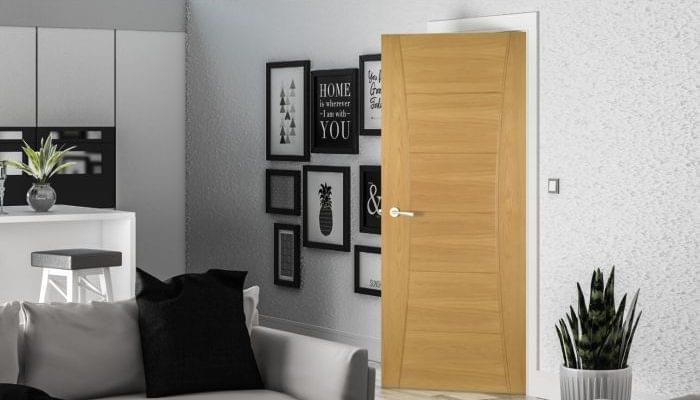Key Takeaways
| Key Takeaways | Description |
| Fire Door Essentials | Fire doors are vital for compartmentalising buildings to prevent the spread of fire, offering crucial time for evacuation. |
| Safety Compliance | Regular inspections and adherence to regulations are key to ensuring fire doors function properly in emergencies. |
| Design Flexibility | Modern fire doors can be aesthetically pleasing and are customizable to fit various home styles without sacrificing safety. |
| Installation and Upkeep | Proper installation and maintenance are essential for the optimal performance of fire doors. |
| Technological Advancements | Future innovations in fire door technology are expected to enhance safety features and design options. |
| FAQs & Common Concerns | Fire doors should be inspected at least every six months. |
Understanding Fire Doors and Their Role in Safety
Introduction to Fire Doors
Fire doors are not just any ordinary doors; they are engineered lifelines in the event of a fire. Their primary function is to resist the spread of fire and smoke, acting as a protective barrier that can save lives and property. These doors are rated for their fire-resistance capabilities and are a crucial part of a building's safety infrastructure. Fire-rated doors are crafted with specific materials and have to pass stringent tests to hold up against high temperatures, ensuring they perform when it counts.The Science Behind Fire Doors
Fire doors work on the principle of fire compartmentation. This involves dividing a building into sections using fire-resistant materials, thus preventing or slowing the spread of fire and smoke from one area to another. It's a passive fire protection measure - meaning it's always there, ready to perform without human intervention. The effectiveness of a fire door hinges on its core components: the door itself, the frame, hardware, and intumescent seals that expand in heat to block gaps.Legal Framework and Regulations
Legal stipulations, such as the Fire Safety Act 2021 and subsequent regulations, underscore the importance of including fire doors in the fire risk assessments for buildings with multiple dwellings. The law mandates that fire doors be maintained in good working order and be subject to regular inspections, ensuring they are always ready to perform their safety-critical role.| Feature | Importance |
| Fire-resistance rating | Determines the duration a door can withstand fire. |
| Integrity | Ability to resist flames and hot gases. |
| Insulation | Capacity to limit temperature rise on the non-fire side. |
| Hardware | Must be compatible with fire door design to function effectively (e.g., handles, hinges, door closers). |
The Impact of Fire Doors in Residential Settings

Case Studies and Research Findings
The critical role of fire doors in residential safety is not merely theoretical. Studies and real-life incidents have repeatedly shown that these doors can be the difference between life and death. In instances of home fires, closed fire doors have significantly slowed the spread of smoke and flames, affording residents precious minutes to evacuate and firefighters a safer environment to work in. Reports highlight how closed doors not only reduce fire growth but also decrease carbon monoxide levels, which can be just as lethal as the fire itself.Technical Specifications of Fire Doors
Technicalities define the efficacy of fire doors. When considering a fire door for residential use, it is essential to understand:- Size: A larger door can block more smoke and heat.
- Material: Usually composed of a combination of glass, gypsum, steel, timber, and aluminium to withstand extreme heat.
- Style: Aesthetics need not be sacrificed; fire doors can be stylish and functional.
- Hardware: Includes seals, hinges, and door closers that are heat resistant.
- Fire Resistance Duration: Typically ranges from 30 minutes to 120 minutes, depending on the specification required.
Installation and Maintenance
The correct installation of fire doors is paramount. They must be fitted with the appropriate fire-rated frame and hardware to be effective. Maintenance is equally crucial; fire doors should be checked regularly to ensure they close properly and that the seals and hardware remain in good condition. Self-closing mechanisms are particularly important, as they ensure that doors automatically close in the event of a fire, addressing the risk posed by human error, such as leaving a door ajar. For those looking to enhance their home's safety, our Victorian doors offer a perfect blend of traditional style and modern safety standards. And to ensure your fire doors remain in peak condition, consider our selection of door hardware, designed to complement the high-quality construction of our doors.Integrating Fire Doors into Residential Safety Plans

Complementary Safety Features
Fire doors form a critical component of a comprehensive residential fire safety plan, working in conjunction with other systems to protect occupants. These safety features typically include fire alarms, smoke detectors, and fire suppression systems like sprinklers. Each element plays a distinct role in the detection, containment, and extinguishing of fires, with fire doors specifically designed to prevent the spread of fire and smoke, thereby protecting egress routes and allowing for safe evacuation.Architectural and Aesthetic Considerations
When integrating fire doors into a home, it's possible to maintain aesthetic harmony without compromising safety. Modern fire doors come in various designs and finishes that can complement the interior decor. They can be made to look indistinguishable from standard doors, ensuring that safety features blend seamlessly into the architectural design. Fire doors can indeed be an asset, enhancing the overall design while providing peace of mind.Future Directions and Innovations
The future of fire doors is likely to see advances in technology and design, making them even more integral to residential safety. Innovations may include:- Smart technology: Doors that integrate with home automation systems to provide alerts and automatically close in the event of a fire.
- Improved materials: Development of lighter, stronger materials offering enhanced fire resistance.
- Design innovations: More varied designs that cater to different aesthetic preferences without sacrificing safety.
- Regulation adaptations: Updated regulations that reflect technological advancements and improve safety standards.
| Innovations | Expected Benefits |
| Smart Technology | Enhanced automation and connectivity for better fire safety management. |
| Improved Materials | Stronger, more durable doors that offer better protection and longevity. |
| Design Variations | Greater choice for homeowners to match safety features with home aesthetics. |
| Regulatory Updates | Better safety protocols and building codes to incorporate advancing fire door technologies. |


